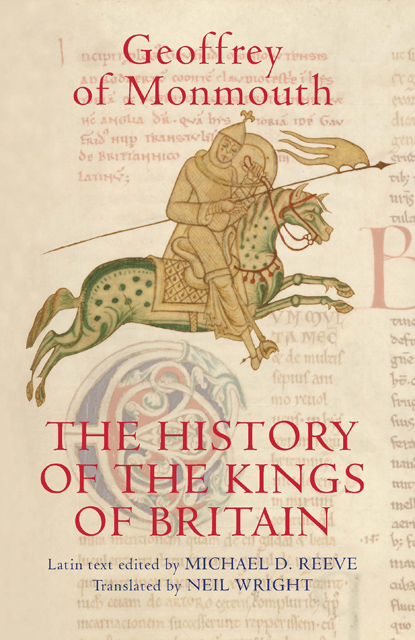 The History of the Kings of Britain
The History of the Kings of Britain Published online by Cambridge University Press: 10 March 2023
Geoffrey, Merlin, and De gestis Britonum
At Oxford from 1129 to 1152 a Galfridus Artur, twice called magister, and a Gaufridus bishop elect and then bishop of St Asaph, once called magister, witnessed several extant documents, mostly alongside Walter archdeacon of Oxford . The author of the work commonly known as Historia regum Britanniae names himself as Galfridus Monemutensis (§§ 3, 110, 177) and says that he has translated an old British book put at his disposal by Walter (§§ 2, 208); and not only do some of the older and better manuscripts call the author in titles and subscriptions Galfridus Artur (or Arturus) Monemutensis, but in its transmitted form the work must have been finished between 1123, when Alexander was consecrated bishop of Lincoln (§ 110) , and January 1139, when Robert of Torigni showed Henry of Huntingdon a copy at Bec . Robert, presumably in a position to know, already treated the three bearers of the name as the same person .
So great was the success of the work, especially in England and northern France, that 217 manuscripts have been listed, perhaps a third of them written before the end of the century . From their relationships it will emerge below that Geoffrey must actually have called the work De gestis Britonum, and so that is what I shall call it here.
He had already released a trailer for it. After telling how Merlin outwitted Vortigern's wizards (§ 108), he turns aside to mention that before he reached that point many people who had got wind of Merlin, not least Alexander bishop of Lincoln, pressed him to issue Merlin's prophecies (§ 109). Most manuscripts of De gestis Britonum incorporate them (§§ 111-17), introduced either by an address to Alexander or by a statement that he complied with Alexander's request (§ 110); in both versions of the transaction he says that he had intended to finish De gestis Britonum before tackling the prophecies.
To save this book to your Kindle, first ensure no-reply@cambridge.org is added to your Approved Personal Document E-mail List under your Personal Document Settings on the Manage Your Content and Devices page of your Amazon account. Then enter the ‘name’ part of your Kindle email address below. Find out more about saving to your Kindle.
Note you can select to save to either the @free.kindle.com or @kindle.com variations. ‘@free.kindle.com’ emails are free but can only be saved to your device when it is connected to wi-fi. ‘@kindle.com’ emails can be delivered even when you are not connected to wi-fi, but note that service fees apply.
Find out more about the Kindle Personal Document Service.
To save content items to your account, please confirm that you agree to abide by our usage policies. If this is the first time you use this feature, you will be asked to authorise Cambridge Core to connect with your account. Find out more about saving content to Dropbox.
To save content items to your account, please confirm that you agree to abide by our usage policies. If this is the first time you use this feature, you will be asked to authorise Cambridge Core to connect with your account. Find out more about saving content to Google Drive.